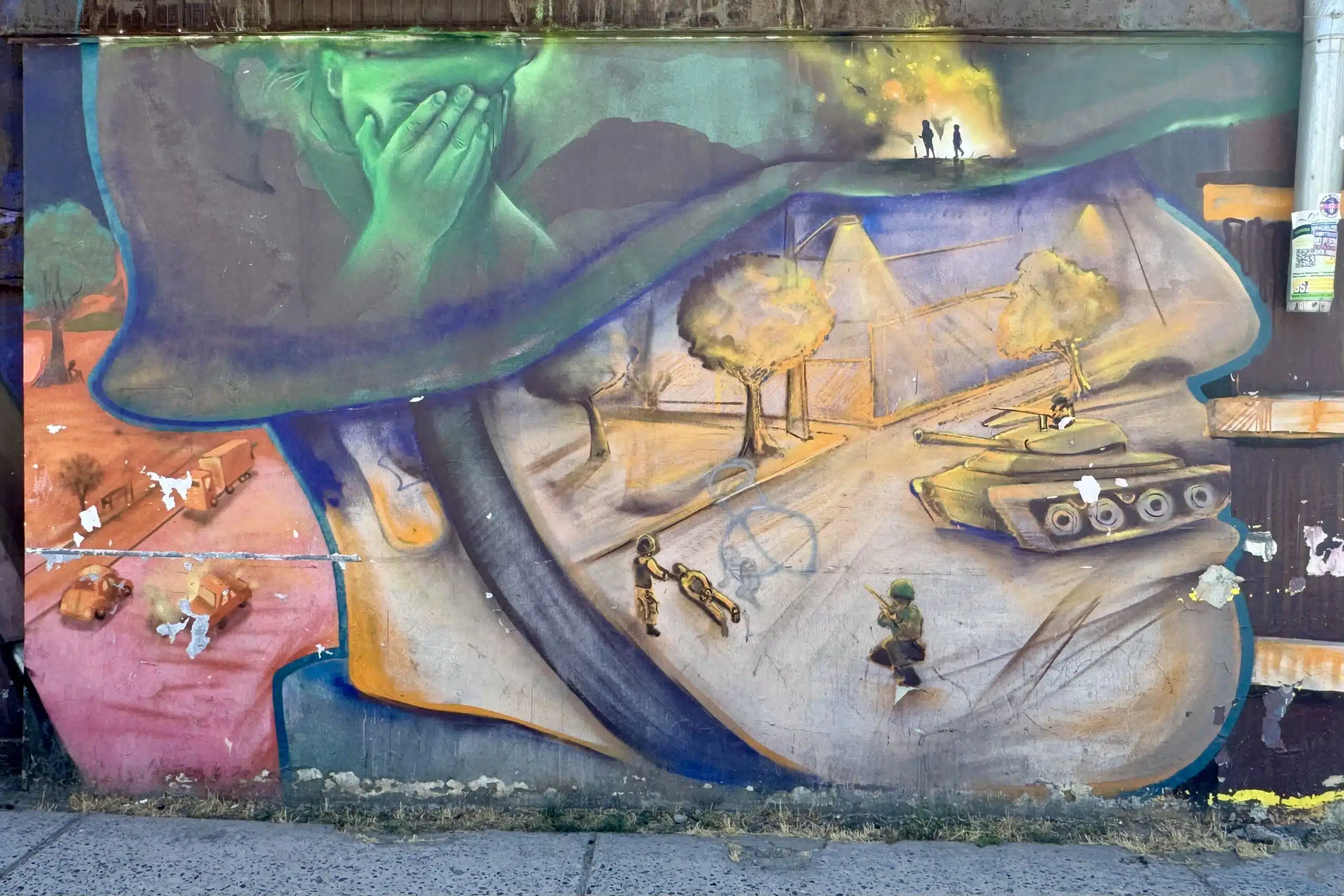With this post, you’ll discover Antelope Canyon— a stunning, hidden gem not far from the Grand Canyon. Here’s how I found it…
Upper Antelope Canyon
It was midday one summer in Arizona. I was driving across Navajo land at the start of an 1,100-mile road trip through the American Southwest. As I headed north on Route 20, I noticed a large white tent and a good number of cars. We were in the middle of the desert— there was seemingly no reason to be here. Curiosity got the best of me, so I slowed and made a U-turn.
A homemade sign announced, “Antelope Canyon Tours”. I had lived in Scottsdale for six years at that point, and I had never heard of Antelope Canyon. It was clear these other people had, and they went out of their way to see it. On a whim I decided to join them. (Explorative travel!)
Navajo Guides
I approached the table where a woman collected payment for guided visits to the canyon from mostly European tourists. She seemed surprised when I asked what the tour involved. She simply explained that if I hurried, I could join the last group to see “the sunbeam” (whatever that was).
Later I learned the sunbeam became famous overseas when a German travel show featured it in a segment about the desert southwest. Many Europeans have a fascination with America’s Old West. They’re lured to the unique landscapes, ghost towns, abandoned mines, rodeos, and 19th century saloons. Scottsdale still has hitching posts in some parts of town, though I’ve never seen one with a horse attached.
I paid my fee and boarded one of several jeeps. A Navajo guide accompanied each one, as required. About 20 minutes later we pulled into another parking area in a deep canyon. Several more vehicles and guides were already staged there. Entrance to the main attraction— “Upper Antelope Canyon”— was closely timed. The guides ushered a large number of groups through it in quick succession. (People exited at the other end of the canyon to maintain a steady, one-way flow of pedestrian traffic.)
The Sunbeam
I soon discovered what the fuss was all about. Inside the towering slot canyon were curved, almost flowing sandstone walls carved smooth by millennia of floodwaters gushing past them. The etched “designs” and colors were striking— red, orange, yellow, purple, and brown with contrasting areas of light and shade. The ground was covered in sand. Overhead, you occasionally saw sunlight.
And at this time of year, at this particular time of day, in one spot, the sun shone down through a hole in the ceiling like a bright spotlight. The sunbeam. It’s a sought-after, almost iconic photo of the Southwest, I now know. Our guide tossed some sand in the air to reflect the light and accentuate the beam for our cameras. The lighting and contrast in the canyon are tricky. My amateur photos taken without a tripod don’t do the place justice.
Trust me when I say the canyon had an otherworldly, almost lunar quality. (I’ve never actually been to the moon and can’t fairly make that comparison. But Upper Antelope Canyon is a truly unique place.) I’d never seen anything like it. I wanted to linger, but each group was allotted a strictly controlled amount of time. Despite the crowd and the feeling of being rushed, it remains one of my favorite discoveries in Arizona.
Lower Antelope Canyon
Two years later I returned to the area with Danish friends from a previous home exchange. This time we checked out Lower Antelope Canyon. It’s just as remarkable as its upper cousin but a bit more physically challenging. The upper canyon is flat, wide, and easily walkable. However, visitors descend to the lower canyon via a steep metal stairwell. Then they snake their way along an equally striking but far narrower canyon.
At times it’s so narrow you have to remove any backpacks and turn sideways to pass through. (Floodwaters still rush through the canyon. Erosion constantly changes its configuration, so you may encounter different conditions.) The lower canyon is much wider at the top and allows in more sunlight. The lower canyon is also less crowded and feels a bit more adventurous. The scenery is just as remarkable but not as famous as the upper canyon’s.
Choose a Tour Company
The number of companies now offering tours of Antelope Canyon suggests the site is becoming more popular. But it’s still unknown to plenty of well-traveled folks and Arizona residents. For now, I think it still qualifies as under-the-radar. Check out the variety of tour offerings online and choose the one that suits you. Unless you’re a pro, consider a guide with photographic experience to help you select the best settings for your camera.
[Note that in 1997, 11 tourists were killed when a 6-foot wall of water carrying rocks and debris swept through Lower Antelope Canyon after a distant rainstorm. Flash floods can imperil hikers in any of Arizona’s canyons with scant warning. If you can see or hear inclement weather— no matter how far away it seems— get to high ground immediately.]
Click here for more information about Upper and Lower Antelope Canyons. And while you’re in Northern Arizona, consider stargazing in Sedona or tour a nuclear missile silo near Tucson.
Affiliate Advertising: If you use these links to buy something, I may earn a commission at no additional cost to you.






